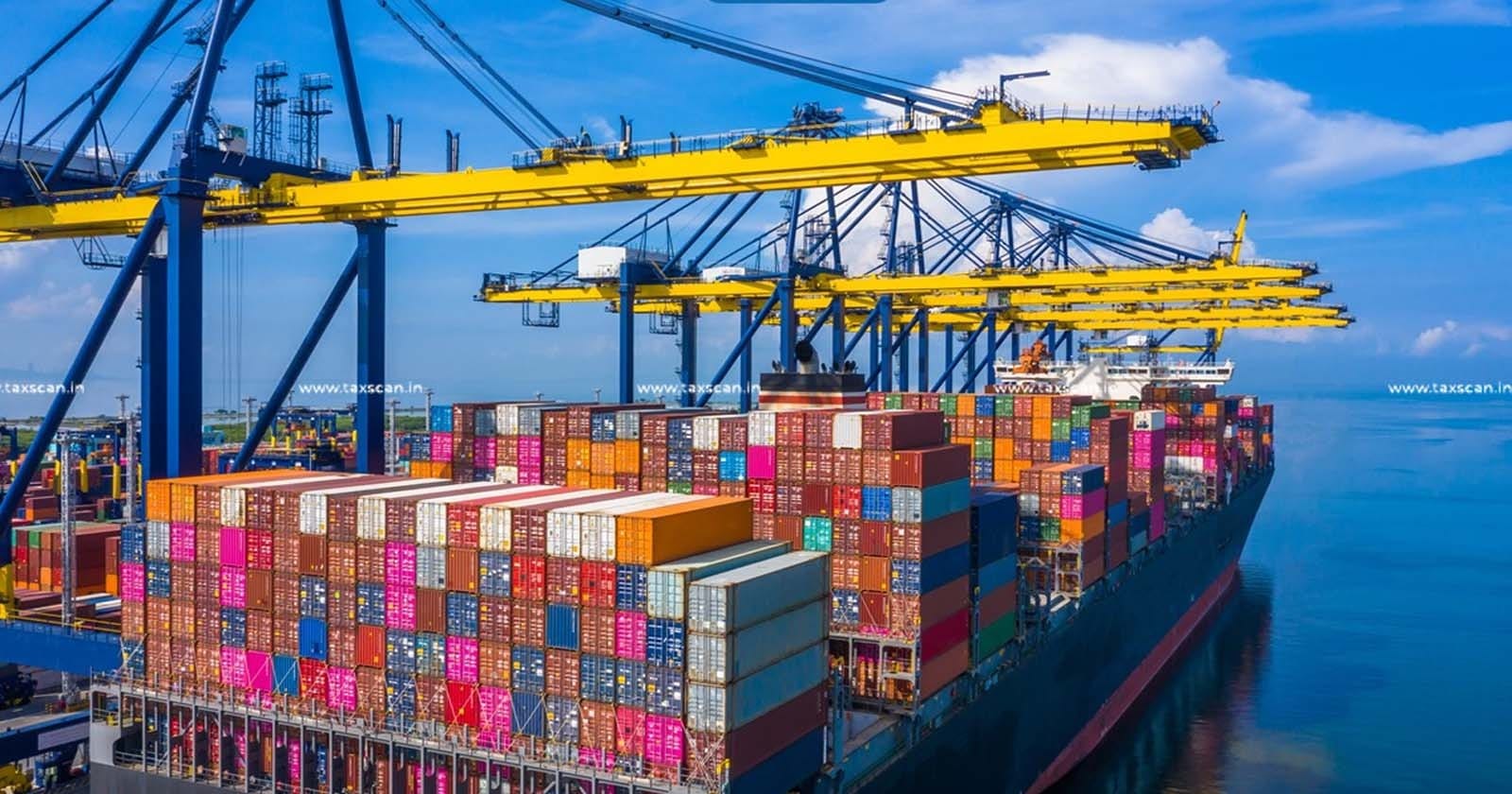Taxation Aspects of Transshipment Operations
This article provides a concise overview of the transshipment operation, outlining the key steps and procedural requirements involved in the transshipment process

Transshipment Operations – Transshipment Operation taxation – Taxation of Transshipment Operations – TAXSCAN
Transshipment Operations – Transshipment Operation taxation – Taxation of Transshipment Operations – TAXSCAN
Transshipment:
Transshipment refers to the strategic cargo transfer between vessels or transportation modes during transit. This process involves unloading goods from one vessel and reloading them onto another. It facilitates efficient movement from origin to final destination, often leveraging multiple transportation modes such as rail, road, sea, or air.
A spice exporter in Kochi, Kerala, India ships a container of spices to a buyer in New York, USA. The container is loaded onto a truck at the exporter's warehouse and transported to the Cochin Port in Kochi. At Cochin Port, the container is loaded onto a ship bound for the Port of Singapore. From Singapore, the container is transshipped onto another ship and transported to the Port of Newark in New Jersey, USA, and then finally delivered to the buyer in New York.
In this example, the container was transshipped from one ship to another, using a combination of road and sea transportation modes to complete the journey from Kerala to the USA.
Become a PF & ESIC expert with our comprehensive course - Enroll Now
Goods in transit & Transshipment
Goods in transit involve the same conveyance (e.g., same ship or truck) from origin to destination, whereas transshipment involves a change in conveyance (e.g., from ship to truck or from one ship to another) at an intermediate point.
Importance of Transshipment
Transshipment plays a vital role in global trade, acting as a critical link in the supply chain.
- Increased Efficiency: Consolidating cargo, using larger vessels, and reducing transportation costs.
- Improved Connectivity: Connections between trade routes, rerouting of cargo, and avoidance of disruptions.
- Economic Benefits: Revenue generation, job creation, and investment in infrastructure development.
- Reduced Transportation Costs: Optimized routes, reduced fuel consumption, and efficient transportation modes.
Eway Bill and Transshipment
E-way bills are electronic documents generated on the GST portal for transporting goods valued over Rs. 50,000 within India. They are mandatory under GST to facilitate smooth and transparent goods movement. During transshipment involving multiple modes of transport, if the initial e-way bill specifies a vehicle, changes in vehicles or transport modes can be updated on the portal or via SMS, avoiding the need for creating new e-way bills.
Transshipment Procedures
The rules governing the transshipment of imported cargo in India are clearly outlined in Chapter VIII of the Customs Act, 1962, and are further clarified by the Goods Imported (Conditions of Transshipment) Regulations, 1995, as well as supplementary guidelines issued by the relevant regulatory bodies.
The Customs Act of 1962 generally requires the payment of import duties upon the arrival of goods at a port or airport in India. However, to facilitate the movement of goods to other locations within India or even abroad, the Act allows for transshipment. This means goods can be transferred from one port/airport to another without the payment of import duties. (Section 54 of the Customs Act, 1962)
Become a PF & ESIC expert with our comprehensive course - Enroll Now
Transshipment permit
A Transshipment Permit is essentially a customs clearance allowing shipping agents to transport imported goods, on which duties have not yet been paid, from the port/airport of arrival to another designated location within India, such as another port, airport, inland container depot (ICD), or container freight station (CFS). To obtain this permit, shipping agents must apply to customs authorities.
This application typically includes:
- five specific transshipment forms,
- a sub-manifest detailing the goods, and
- a copy of the Import General Manifest (IGM).
Customs officials then meticulously review the information provided in the application. If the documentation is found to be accurate and complete, and no adverse records or alerts exist against the shipping agent, the customs authorities will grant the necessary permission for the transshipment to proceed.
Bond and Bank Guarantee for Transshipment of Duty-Unpaid Goods
To ensure the safe and secure transportation of imported cargo that has not yet had import duties paid, a bond with a bank guarantee is required from the carrier responsible for the transshipment of the goods. This requirement serves as a financial safeguard against potential losses due to pilferage or other unforeseen circumstances during the movement of the cargo between ports, airports, inland container depots (ICDs), or container freight stations (CFSs).
- Discharge of the Bond:The primary condition for the discharge (release) of the bond is the presentation of a certificate (landing certificate) from the customs authorities at the destination port, airport, ICD, or CFS. This certificate confirms the safe arrival of the imported goods at the designated location.
- Timeframe for Certificate Submission: The carrier is typically given a specific timeframe, usually one month, to submit the certificate of safe arrival. In certain cases, this timeframe may be extended by the relevant customs officer.
- Consequences of Non-Compliance: If the carrier fails to submit the required certificate within the allotted timeframe the bond will be forfeited. This means that the carrier will be liable to pay a penalty equal to the value of the imported goods or their prevailing market price, whichever is higher.
- Bond Value: The bond value is typically expected to match the value of the goods being transshipped. However, due to the challenges faced by shipping agents in obtaining the necessary documents to determine the value of goods, a notional value is used instead. This notional value is calculated based on the average value of cargo per container transshipped in previous instances.
- The Running Mother Bond : It is a system designed to streamline the process of executing multiple bonds for carriers involved in frequent container transshipment. Instead of individual bonds for each shipment, carriers can establish a single, high-value mother bond. This value is determined by factors like average containers per trip, shipment frequency, and estimated container value.
Become a PF & ESIC expert with our comprehensive course - Enroll Now
Customs Seals for Transshipment/ One-time bottle seals
Following the issuance of a transshipment permit and the execution of required bonds, customs officials typically seal the containers with "one-time bottle seals" to ensure security during transit.
However, if the containers are already sealed by shipping agents using "one-time bottle seals," customs officials do not reseal them. In such cases, shipping agents are obligated to provide the serial numbers of the seals to customs for verification.
After the sealing process the containers are transported to the designated destination port, ICD, or CFS by the shipping agents using various modes of transport, including vessels, rail, or road. Notably, the core transshipment procedures remain consistent across all these modes of transportation.
Upon the safe arrival of containers at their designated destination port, CFS, or ICD, authorized agents or the importers are responsible for completing all necessary customs formalities. These formalities include submitting the Bill of Entry, undergoing customs assessment, and facilitating the examination of goods by customs authorities before the goods can be officially cleared for release.
CONCLUSION
The transshipment of imported cargo within India involves a multi-layered process that prioritizes security and accountability. Through the issuance of transshipment permits, the execution of bonds, and the meticulous sealing of containers, customs authorities strive to ensure the safe and lawful movement of goods while minimizing the risk of revenue leakage and maintaining the integrity of the import process.
Support our journalism by subscribing to Taxscan premium. Follow us on Telegram for quick updates


